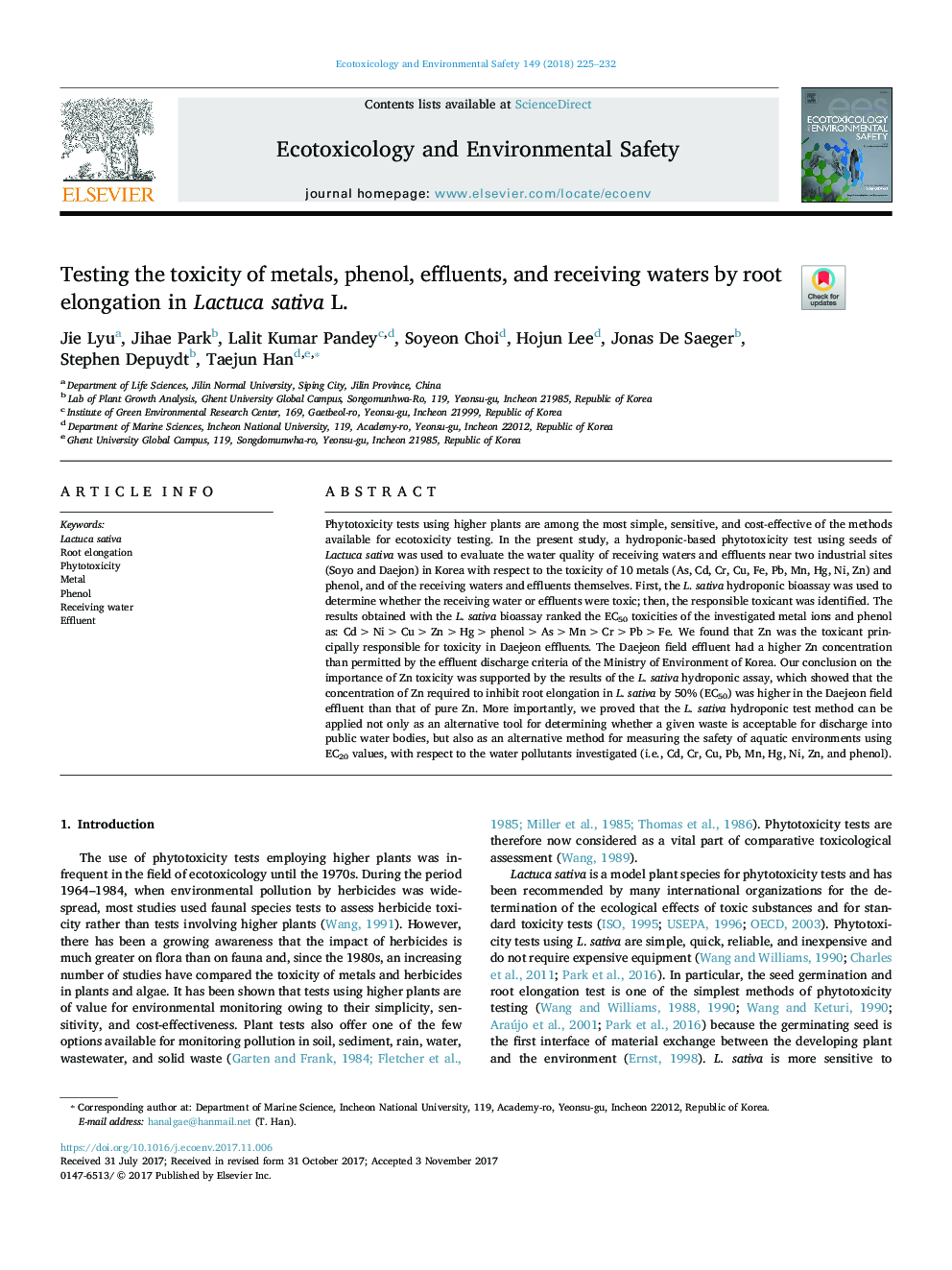| کد مقاله | کد نشریه | سال انتشار | مقاله انگلیسی | نسخه تمام متن |
|---|---|---|---|---|
| 8854488 | 1618915 | 2018 | 8 صفحه PDF | دانلود رایگان |
عنوان انگلیسی مقاله ISI
Testing the toxicity of metals, phenol, effluents, and receiving waters by root elongation in Lactuca sativa L.
دانلود مقاله + سفارش ترجمه
دانلود مقاله ISI انگلیسی
رایگان برای ایرانیان
کلمات کلیدی
موضوعات مرتبط
علوم زیستی و بیوفناوری
علوم محیط زیست
شیمی زیست محیطی
پیش نمایش صفحه اول مقاله

چکیده انگلیسی
Phytotoxicity tests using higher plants are among the most simple, sensitive, and cost-effective of the methods available for ecotoxicity testing. In the present study, a hydroponic-based phytotoxicity test using seeds of Lactuca sativa was used to evaluate the water quality of receiving waters and effluents near two industrial sites (Soyo and Daejon) in Korea with respect to the toxicity of 10 metals (As, Cd, Cr, Cu, Fe, Pb, Mn, Hg, Ni, Zn) and phenol, and of the receiving waters and effluents themselves. First, the L. sativa hydroponic bioassay was used to determine whether the receiving water or effluents were toxic; then, the responsible toxicant was identified. The results obtained with the L. sativa bioassay ranked the EC50 toxicities of the investigated metal ions and phenol as: Cd > Ni > Cu > Zn > Hg > phenol > As > Mn > Cr > Pb > Fe. We found that Zn was the toxicant principally responsible for toxicity in Daejeon effluents. The Daejeon field effluent had a higher Zn concentration than permitted by the effluent discharge criteria of the Ministry of Environment of Korea. Our conclusion on the importance of Zn toxicity was supported by the results of the L. sativa hydroponic assay, which showed that the concentration of Zn required to inhibit root elongation in L. sativa by 50% (EC50) was higher in the Daejeon field effluent than that of pure Zn. More importantly, we proved that the L. sativa hydroponic test method can be applied not only as an alternative tool for determining whether a given waste is acceptable for discharge into public water bodies, but also as an alternative method for measuring the safety of aquatic environments using EC20 values, with respect to the water pollutants investigated (i.e., Cd, Cr, Cu, Pb, Mn, Hg, Ni, Zn, and phenol).
ناشر
Database: Elsevier - ScienceDirect (ساینس دایرکت)
Journal: Ecotoxicology and Environmental Safety - Volume 149, March 2018, Pages 225-232
Journal: Ecotoxicology and Environmental Safety - Volume 149, March 2018, Pages 225-232
نویسندگان
Jie Lyu, Jihae Park, Lalit Kumar Pandey, Soyeon Choi, Hojun Lee, Jonas De Saeger, Stephen Depuydt, Taejun Han,